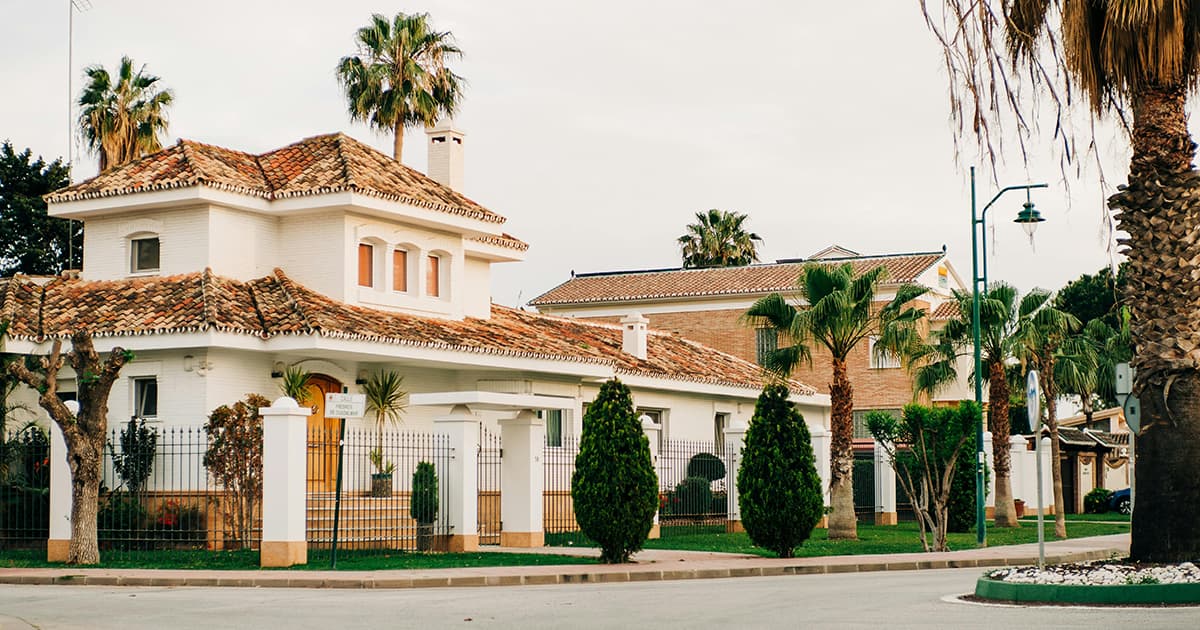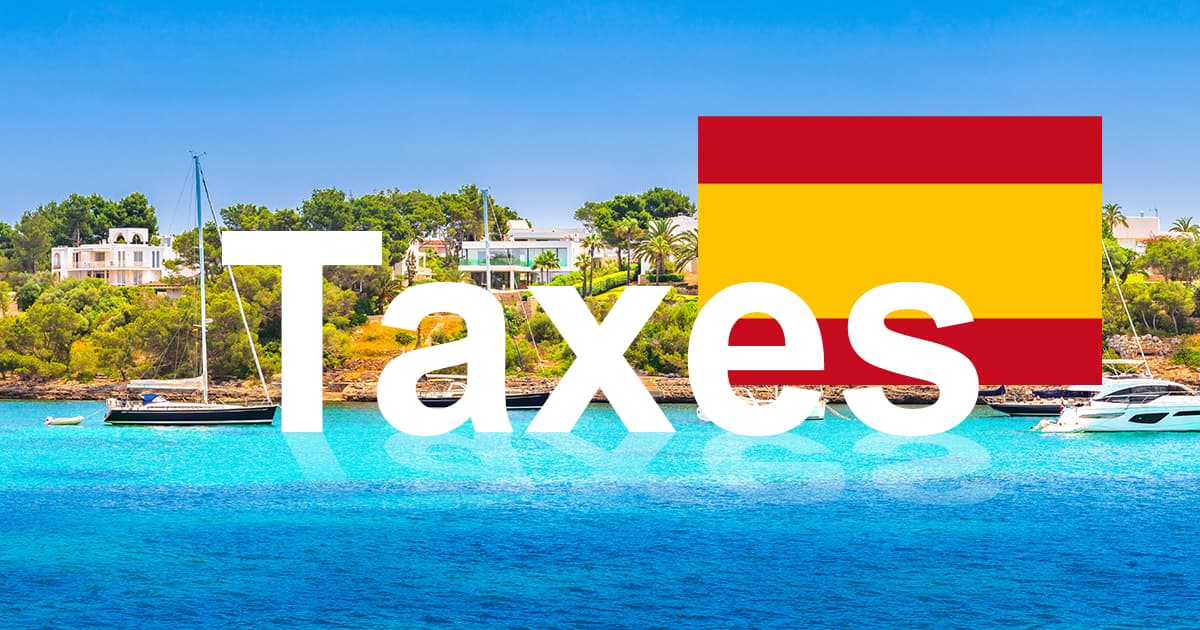
Plusvalía Municipal in Spain – 2025 Guide
Last update: September 3, 2025
Reading time: 13.5 min
No Time to Read It All? Here’s the Quick Summary:
The Plusvalía Municipal (officially known as IIVTNU) is a local tax in Spain applied when urban property is transferred through sale, inheritance, or donation. It is based on the increase in the value of the land (not the building) during the period of ownership.
Since 2022, sellers can choose between two calculation methods:
– The objective method, based on the cadastral land value and the number of years owned
– The real gain method, based on actual profit from the sale
The seller typically pays this tax, but in the case of inheritance or donation, the heir or recipient is responsible. You must file the declaration with the local town hall (Ayuntamiento) within 30 business days (or 6 months for inheritance).
Each municipality sets its own rates and reductions, so the amount due can vary significantly. If the real gain is zero or negative, you may be exempt — but you must declare and prove it.
SpainEasy Support helps simulate, declare, and optimize your Plusvalía — with full support in English, French, or Spanish.
What Is the Plusvalía Municipal Tax in Spain?
The Plusvalía Municipal, officially called the Impuesto sobre el Incremento de Valor de los Terrenos de Naturaleza Urbana (IIVTNU), is a local tax levied by Spanish municipalities when urban real estate is transferred. Despite its complicated name, the concept is simple: this tax measures the increase in the value of the land on which a property is located — not the building itself.
Unlike the national capital gains tax (CGT), which is based on the actual profit made from a sale, the Plusvalía is calculated on the theoretical appreciation of the land’s cadastral value during the period of ownership.
Key points:
- Urban land only: The Plusvalía tax only applies to properties located on urban land (terrenos de naturaleza urbana). Rustic or rural land is excluded.
- Triggered by ownership transfer: The tax is due when a property is sold, inherited, or gifted — regardless of whether any real financial gain was made.
- Charged by local town halls (Ayuntamientos): Each municipality sets its own rates and coefficients, within national limits.
Whether you’re a resident or a non-resident, if you transfer ownership of an urban property in Spain — whether through sale, donation, or inheritance — you (or the recipient) may be liable for this tax.
Who Has to Pay the Plusvalía?
In most property transfers involving urban real estate in Spain, the person receiving payment or transferring ownership is responsible for paying the Plusvalía Municipal. However, there are important exceptions depending on the type of transaction.
General rule:
- In a sale, the seller pays the tax by default.
Exceptions:
- In a donation (gift), the recipient (donee) is liable for the tax.
- In an inheritance, the heir or legatee must pay the tax — and they have six months from the date of death to do so (extendable by request).
It is legally possible to agree otherwise in a private sale contract — for example, having the buyer pay the Plusvalía — but if this is not explicitly stated, the seller remains responsible. Note that in donations and inheritances, no such contractual agreement can override the legal responsibility.
Summary Table:
| Situation | Who Pays | Notes |
|---|---|---|
| Sale | Seller | Unless otherwise agreed in the contract |
| Gift (Donation) | Donee (recipient) | Cannot be reassigned by contract |
| Inheritance | Heir or legatee | Payable within 6 months (extendable) |
Who Pays: Seller
Notes: Unless otherwise agreed in the contract
Who Pays: Donee (recipient)
Notes: Cannot be reassigned by contract
Who Pays: Heir or legatee
Notes: Payable within 6 months (extendable)
Source: Agencia Tributaria
2022 Reform: Two Calculation Methods
In October 2021, Spain’s Constitutional Court ruled the old Plusvalía Municipal system unconstitutional, stating that it could result in unfair taxation — especially in cases where no real gain was made.
To comply with the ruling, the Spanish government passed a new law (Royal Decree-Law 26/2021), which came into effect on January 1, 2022. This reform introduced two calculation methods, allowing the taxpayer to choose whichever results in a lower tax liability.
Important: Sellers can now legally choose the more favorable method when calculating the Plusvalía tax — either the estimated increase based on cadastral data (Objective Method) or the actual profit from the sale (Real Gain Method).
Objective Method (Official formula)
This is the default method used by most municipalities. It estimates the increase in land value based on standardized coefficients and the cadastral land value (valor catastral del suelo) — not the market price.
Formula:
Cadastral land value × Official coefficient × Municipal tax rate = Tax due
- Cadastral land value: Only the land portion is used — not the value of the building.
- Official coefficient: Determined by how long the property was held.
- Municipal tax rate: Set by each Ayuntamiento (max. 30%).
Official Holding Period Coefficients (2025):
| Years Owned | Coefficient |
|---|---|
| Less than 1 year | 0.14 |
| 1 year | 0.13 |
| 2 years | 0.15 |
| 3 years | 0.16 |
| 4 years | 0.17 |
| 5 years | 0.17 |
| 6 years | 0.16 |
| 7 years | 0.12 |
| 8 years | 0.10 |
| 9 years | 0.09 |
| 10–20 years | 0.08 |
Real Gain Method (New optional formula)
This alternative method, introduced in the 2022 reform, calculates the tax based on the actual capital gain made in the transaction — offering a more accurate and fairer result in many cases.
Formula:
(Sale price – Purchase price) × % of cadastral value attributable to land × Municipal tax rate = Tax due
Especially beneficial if:
- The land’s value has only increased slightly
- The market gain was minimal
- You sell at a real loss
To apply this method, you’ll need to document both sale and purchase prices, and obtain the land portion of the cadastral value from your IBI receipt or the Catastro.
How Is the Plusvalía Calculated in Practice?
Calculating Plusvalía Municipal may seem daunting, but it can be broken down into clear steps. Understanding both official and real gain methods helps you choose the one that minimizes your tax liability.
Step-by-Step Process
How to Calculate Plusvalía in Practice:
1. Find the cadastral value of the land
This value (valor catastral del suelo) appears on your IBI tax receipt. You can also retrieve it from the official Catastro website using your property’s reference.
2. Identify the land-to-building ratio
Only the land portion is taxable. For example, if 60% of the cadastral value is land and 40% is construction, calculations should be applied to 60%.
3. Determine the holding period
Calculate the number of years between the purchase date and the date of sale or transfer. Use full years only.
4. Choose your preferred calculation method
– Objective Method: Use the official coefficient for your holding period, multiply it by the land cadastral value and then apply the local tax rate.
– Real Gain Method: Subtract purchase price from sale price, apply the land percentage, and multiply by the municipal rate.
Comparison Examples: Valencia vs Málaga
Scenario:
- Property held for 12 years
- Land cadastral value: €60,000
- Purchase price: €120,000
- Sale price: €180,000
- Land = 60% of total cadastral value
- Municipal tax rate = 27%
Example A: Objective Method
| City | Holding Period Coefficient | Taxable Base | Tax Owed |
|---|---|---|---|
| Valencia | 0.13 | €60,000 × 0.13 = €7,800 | €7,800 × 27% = €2,106 |
| Málaga | 0.12 | €60,000 × 0.12 = €7,200 | €7,200 × 27% = €1,944 |
Example B: Real Gain Method
| Sale Gain | % Attributable to Land | Taxable Base | Tax Owed |
|---|---|---|---|
| €180,000 – €120,000 = €60,000 | 60% | €60,000 × 60% = €36,000 | €36,000 × 27% = €9,720 |
Conclusion
In this case, the objective method results in lower tax, especially in Málaga — even though the real gain was higher. However, if the gain had been smaller or the land value lower, the real gain method could have reduced the tax dramatically.
Tip: Always simulate both methods before filing — it could save you thousands.
When and How to Declare the Plusvalía
Declaring and paying the Plusvalía Municipal is a legal obligation after any property transfer involving urban land in Spain. Failing to comply can result in penalties or delays in updating the land registry.
Declaration Deadlines
The time you have to file depends on the type of transaction:
- Property Sale or Donation → Must be declared within 30 business days from the date of transfer.
- Inheritance → Must be declared within 6 months from the date of death.
This period can usually be extended up to 12 months upon request.
Where to File the Tax
You must declare and pay the Plusvalía Municipal to the local Ayuntamiento (town hall) where the property is located. This can usually be done:
- Online via the town hall’s tax portal (if available), or
- In person at the municipal tax office
Tip: Some municipalities require an appointment (cita previa), so don’t wait until the last day to start the process.
Required Documentation
To file the Plusvalía, gather the following documents:
- Deed of sale, donation, or inheritance (escritura notarial)
- Cadastral reference number (referencia catastral) – can be found on IBI receipt or via Catastro.es
- NIE and contact details of both parties involved
- Proof of acquisition date (purchase deed or previous inheritance title)
Optional but useful:
- Copy of previous IBI receipt (to verify cadastral value)
- Simulation printout if available from the local portal
Documents to Prepare:
- Public deed of sale, gift, or inheritance (notarial act)
- Previous title deed (to determine holding period)
- Copies of the NIE or passport of both parties
- Contact details: email, address, and phone number
- Cadastral reference (can be found on the IBI receipt or via the Catastro website)
- Bank account information (only required if requesting a refund)
Note: If you’re unsure how to file the declaration, a gestor or legal advisor can handle the process on your behalf.
Local Variations: Rates, Reductions & Exemptions
While the Spanish Plusvalía Municipal tax is governed by national legislation, each municipality (Ayuntamiento) has the power to define its own:
- Tax rate (up to a legal maximum of 30%)
- Annual coefficients based on property holding period
- Reductions and exemptions, especially for heirs or family-related transfers
Understanding your local tax rules can make a significant difference in what you owe — or whether you’re eligible for a reduction.
Example Comparison of 3 Major Cities
Below is a side-by-side comparison of Plusvalía rules in Valencia, Málaga, and Barcelona, based on a 12-year ownership period:
| City | Tax Rate | Coefficient (12 years) | Heir Reductions |
|---|---|---|---|
| Valencia | 27% | 0.13 | Up to 95% for direct family (children, parents) |
| Málaga | 25% | 0.12 | 40% if main residence inherited |
| Barcelona | 30% | 0.14 | 0% (no standard reductions) |
Source: Agencia Tributaria & local tax offices
Good to Know
- Some councils may also offer exemptions for low-income heirs, disabled beneficiaries, or if the property’s cadastral value is below a threshold.
- Reductions usually require official application and proof of relationship (e.g. birth or marriage certificates).
- Not all exemptions are automatic — missing the filing deadline could forfeit your rights.
Exemptions You May Qualify For
Although the Plusvalía Municipal tax is widely applied, you may not have to pay it in several situations. Spain introduced new exemptions and safeguards in 2022, making it possible to avoid this tax when certain conditions are met.
Selling at a Loss? No Plusvalía Owed
Since the 2021 Constitutional Court ruling, Spanish law no longer allows town halls to charge Plusvalía if no real gain was made on the sale.
If you sell your property for less than you bought it, or if the land value did not increase, you’re exempt — but you must prove it.
To claim this exemption, you need:
- Deed of purchase (escritura de compraventa)
- Deed of sale
- Proof of transaction costs (agent commissions, notary fees, renovation invoices)
- A breakdown showing that the land portion of the value did not appreciate
Note: If you don’t file or fail to choose the “real gain” method, the local authority will apply the objective method by default — which could result in tax due even if no profit was made.
Inheritance and Gifts
Many municipalities offer generous reductions or exemptions on Plusvalía when the property is passed on to:
- Children or parents
- Spouses or civil partners
- Heirs of a main residence
Example:
- In Valencia, heirs in the direct line may receive up to 95% reduction
- In Málaga, a 40% exemption applies when inheriting the family home
- In Barcelona, standard cases often have no reduction
Reductions are not automatic — you must apply for them and provide supporting documents (e.g. family registry, death certificate, proof of residency).
Transfers After Divorce
No Plusvalía is due when:
- A jointly owned home is transferred from one spouse to the other
- The transfer is part of an official divorce or separation agreement
- The property was not used for business or rental purposes
This exemption is available even if the property increased in value, as long as it was the couple’s shared home.
How SpainEasy Support Can Help
Navigating Plusvalía Municipal tax rules can be overwhelming — especially with the dual calculation methods, strict deadlines, and varying local rules. SpainEasy Support is here to simplify the process and help you save money.
Plusvalía Simulation Before Selling
We calculate your estimated Plusvalía before you sign, comparing:
- The official (objective) calculation
- The real gain method introduced in 2022
This lets you choose the most favorable option and avoid unexpected tax costs at the notary.
Complete Filing and Payment Support
Our team:
- Prepares and submits your Plusvalía declaration
- Pays the tax to the local Ayuntamiento (town hall)
- Ensures no deadlines are missed, avoiding fines or delays in the property transfer
We work with all major cities in Spain — including Valencia, Málaga, Alicante, and Barcelona.
Exemption Requests or Appeals
Selling at a loss or transferring within the family?
We:
- Help you gather documents to prove exemption eligibility
- File the real gain method when beneficial
- Appeal Plusvalía assessments if incorrectly applied
Inheritance and Donation Guidance
Transferring a property after death or as a gift?
SpainEasy Support:
- Assists with inheritance and donation paperwork
- Applies local reductions and exemptions where available
- Coordinates with notaries and heirs, in English, French, or Spanish
More In-Depth Tax Guides for Foreign Property Owners in Spain
Looking to go deeper into specific topics? Here are some of our most in-depth guides that expand on the taxes and procedures mentioned in this article:
Taxes When Purchasing Real Estate in Spain
A detailed breakdown of all upfront taxes and fees, including ITP, VAT, AJD, notary and legal costs — with examples and regional comparisons.
Non-Resident Tax (IRNR) in Spain
Whether you rent your property or not, if you’re not a Spanish tax resident, you must file IRNR. This guide covers tax rates, deadlines, and how to file Modelo 210 from abroad.
IBI: Local Property Tax in Spain
Learn how this annual municipal tax is calculated, when it’s due, and what to do if you miss the deadline. Includes typical IBI ranges in major regions.
Capital Gains Tax When Selling Property in Spain
Selling a home? Understand the full tax implications — from national capital gains tax (IRPF/IRNR) to the local Plusvalía Municipal. Includes tax rates, exemptions, and refund processes.
Real Estate Taxes in Spain: What Every Foreign Buyer Should Know
Our complete overview of all real estate taxes in Spain — from purchase to resale. Ideal if you’re just getting started or want to make sure you’re compliant at every step.













